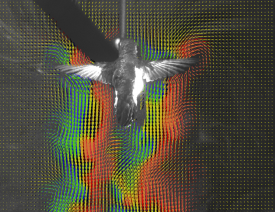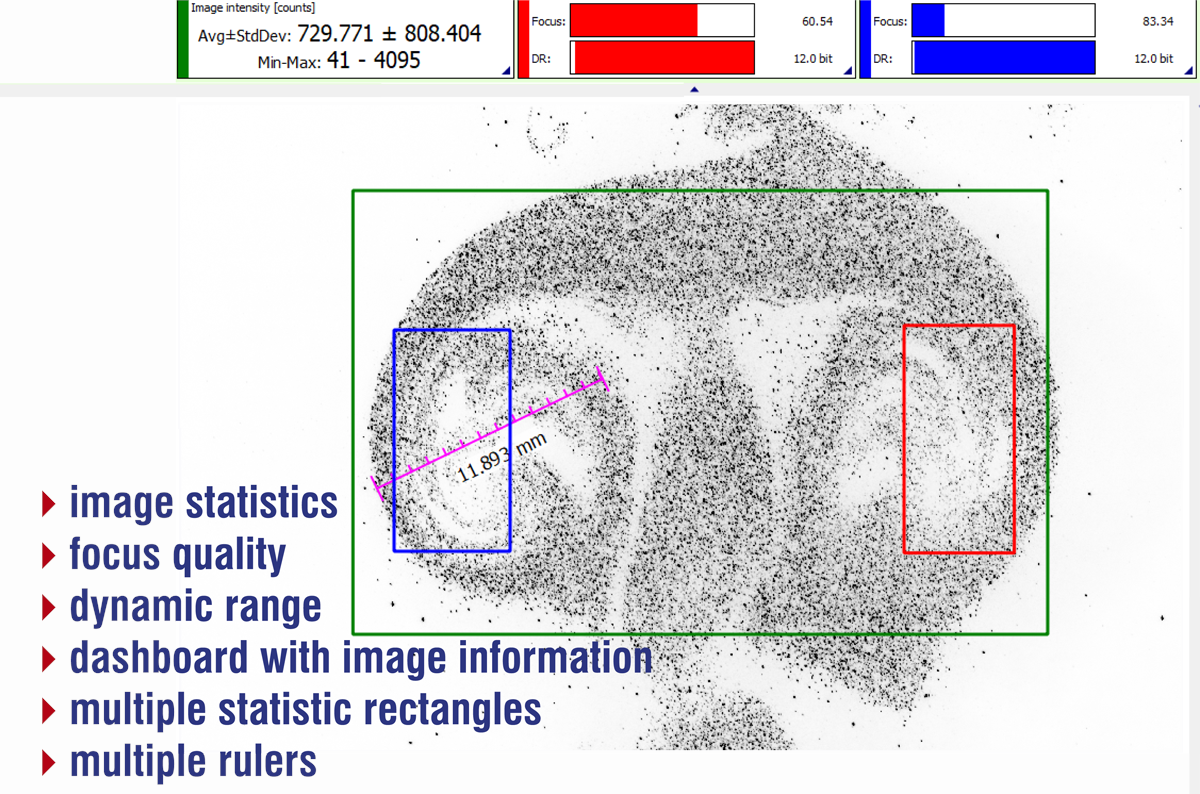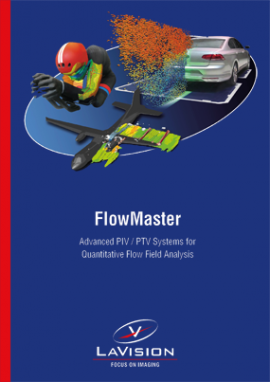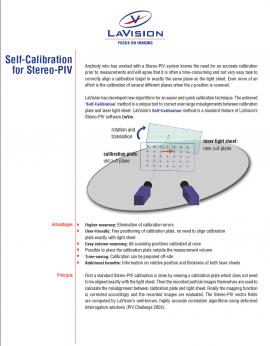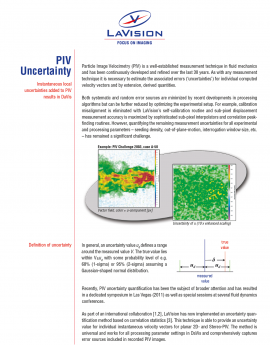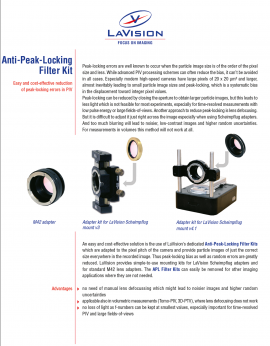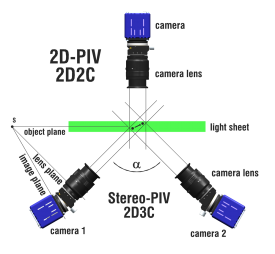
2D & Stereo PIV
LaVision’s FlowMaster PIV systems can be used for 2D and stereoscopic flow field analysis. FlowMaster 2D measures two velocity components in a plane (2D2C) with one camera. FlowMaster Stereo-PIV is a straightforward extension of the FlowMaster 2D concept and enables the measurement of all three velocity components inside a light sheet (2D3C) using two cameras.
Stereo-PIV is based on the principle of stereoscopic imaging: two cameras are arranged to image the illuminated flow particles from different perspectives and Scheimpflug lens arrangements keep both image planes in focus. The combination of both camera projections allows the reconstruction of the true 2D3C-particle displacement inside the measurement area.
For Stereo-PIV LaVision has developed a unique camera calibration method. This so-called Self-Calibration method uses the original particle images of both cameras to correct even large misalignments between calibration plate and laser light sheet. LaVision’s Self-Calibration method is a standard feature of the Stereo-PIV software in DaVis.
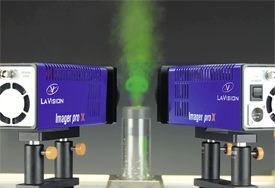
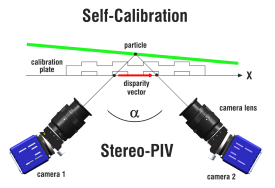
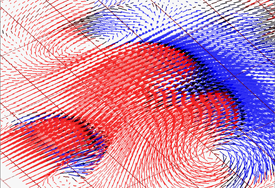
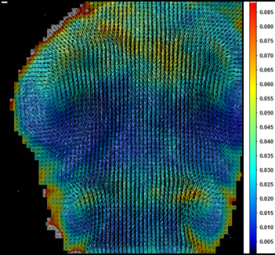
PIV Uncertainty
PIV Uncertainty Quantification
As with all measurement techniques, it is important for PIV to estimate the associated errors (uncertainties) for individual computed velocity vectors as well as for derived quantities. To date, the best approach for uncertainty quantification of PIV data is based on the Correlation Statistics method as applied in our DaVis PIV software package.
This additional uncertainty information can be used to optimize PIV parameter settings and as a guide for a post-processing filter for denoising PIV images without losing relevant flow information.
Among other experimental parameters like seeding density, out of plane motion and interrogation window size Peak-Locking is one factor affecting PIV uncertainty. Peak-Locking occurs when the particle image size is of the order of the pixel size of the sensor causing a bias error of the correlation peak toward integer pixel values. To minimize this effect LaVision offers an Anti-Peak-Locking Filter placed between camera and lens.
- Complete hardware control in DaVis
- PIV Uncertainty Quantification based on correlation statistics
- GPU processing for real time results
- Most advanced PIV algorithms
(excellent performance in PIV challenges) - Stereo-PIV Self-Calibration
- On-line assistance for optimal parameter settings
